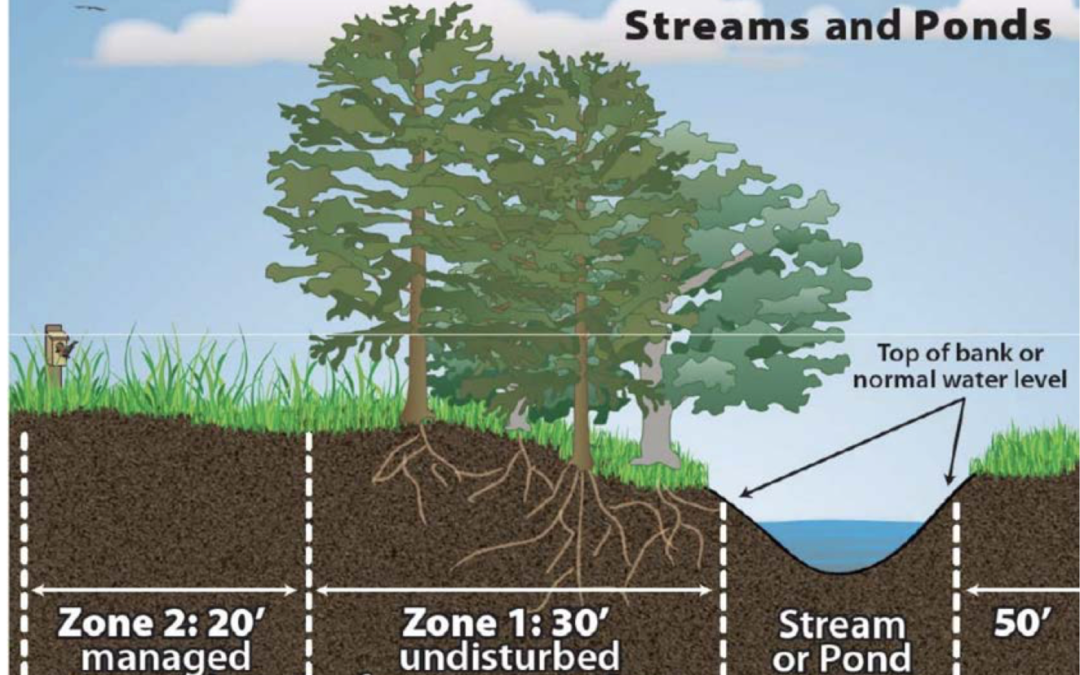The Carrboro Council proposes to put a 10 foot wide cement structure with additional clearing on each side, totaling 30 feet of grading to meet DOT standards. While it sounds appealing to recreational bicyclists to ride next to a creek, the conditions found in the upper Bolin Creek watershed would mean this project (clearing plus cement structures) would wipe out long swaths of trees and vegetation in the riparian buffer along Bolin Creek. Unlike the lower watershed, much of the upper Bolin Creek watershed north of Estes Drive Extension is located in a narrow valley, and the gravity sewer line is very close to the creek. OWASA would require additional grading to prepare the pavement for OWASA service trucks, further impairing a valuable riparian ecosystem.
No credible, accepted environmental science supports paving in a riparian buffer. The reason comes down to what a riparian buffer is and what it does: https://youtu.be/KIhZEfMGTxI
Riparian buffers provide multiple benefits for adaptation to climate change like microclimate creation, flood and drought mitigation. Moreover, by providing a biodiversity corridor and improving local water quality through their filtration capacity for nutrients and pollutants, riparian buffers are important features to maintain.
Additionally, perennial vegetation such as trees are particularly beneficial for long-term atmospheric carbon sequestration, also making riparian buffers a potential tool to further progress towards climate change mitigation.
The NC Gap Analysis Project has identified much of the Bolin Creek riparian corridor as a priority wildlife habitat (please see North Carolina State University, North Carolina Gap Analysis Project, last updated 2019)

